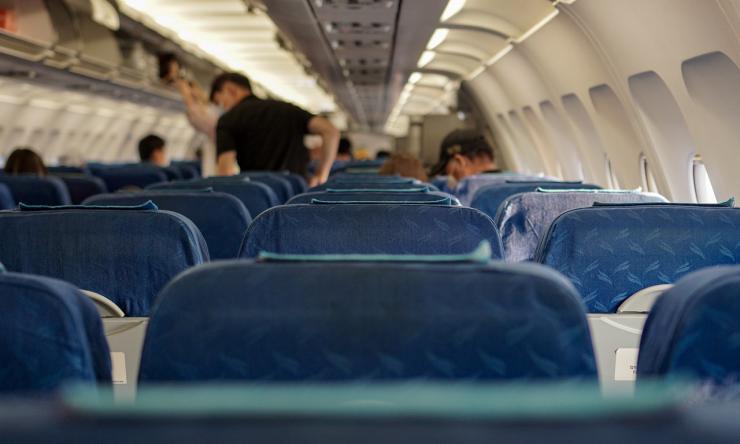Now boarding: Healthy airplane hygiene
Luggage, headphones and neck pillows are all commonly brought on trips, but some unwelcome invisible viruses may also be tagging along on your next flight. Dr. Mike Ren, primary care physician at Baylor College of Medicine, offers plane hygiene tips to ensure you don’t take off or land with an illness.
“Airplanes have many touch points that are perfect for the transfer of bacteria or viruses,” said Ren, assistant professor of family and community medicine. “You don’t want to get sick while on vacation and prevent your chance for relaxation or come back with a cold or something worse.”
While the danger of catching a cold in an airplane is present, Ren says that the chance exists before your boarding group even gets called. Ride sharing services transport hundreds of strangers each day and while each platform has its own standard for cleanliness, it’s possible to still come into contact with germs. Additionally, airports and terminals see thousands of passengers that may be carrying cold and flu viruses with them. When you finally step on a plane, Ren says the most common places that can house bacteria or viruses are the most touched places: seats, tray tables, flight attendant call buttons and air vents, and lavatory door handles.
With the right tools, you can avoid microscopic nuisances on your next visit to the airport. Ren’s travel checklist includes a facemask, hand sanitizer and sanitizing wipes. Facemasks can be worn throughout the airports and during flights to prevent airborne illnesses. Airplanes will typically cycle air in and out of the cabin every 3-4 minutes and in turn cycle out these viruses; however, masks are more reliable protection. Hand sanitizer should be used after touching check-in kiosks, handling boarding passes, before eating snacks and after using the airplane bathroom. Water used in airplane sinks is filtered and safe for hand washing but is not potable and should not be ingested. Sanitizing wipes can be used to wipe down tray tables, arm rests, seats, flight attendant call buttons, vents, lavatory door handles, seat back pockets and other commonly touched surfaces.
“Flight crews have their own pre-boarding cleaning checklists, but since there is short turnover time between flights, they might miss something. Being prepared will give you peace of mind that comes from a clean flight,” Ren said.
Ren also emphasizes that shoes should be worn while flying and to remember that floors may not be cleaned as frequently as other parts of the plane.
Upon arrival at a destination, some people will change out of their clothes and put on new ones. Ren encourages this practice if it brings peace of mind; however, the most common causes of illness will be on dirty surfaces on and around the plane. Minimize this risk by keeping boarding passes and other documents on your cell phone.
“If you are sick, especially if you have a fever higher than 100 degrees, consider rescheduling your travel to keep others around you healthy,” said Ren. “If you must travel, use these tips to keep everyone healthy and prevent yourself from getting worse as your immune system is already weakened.”










